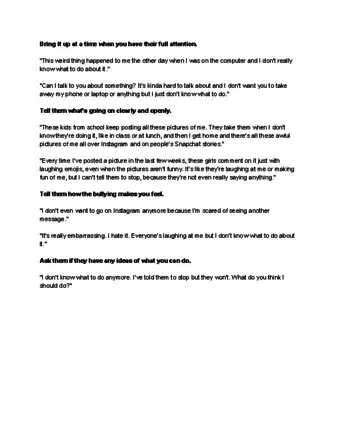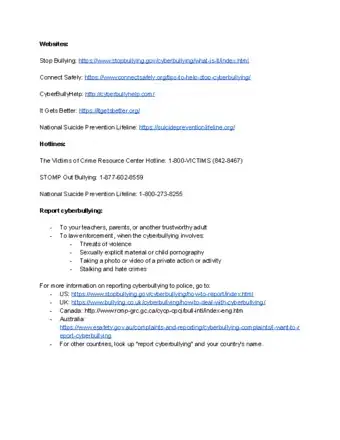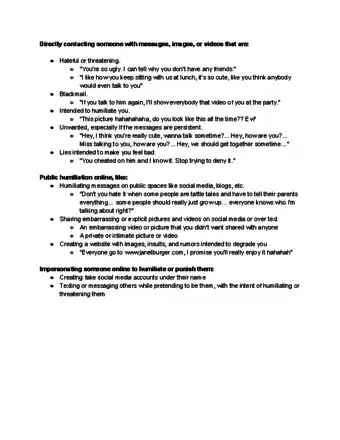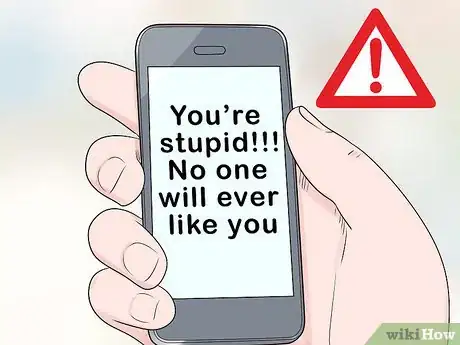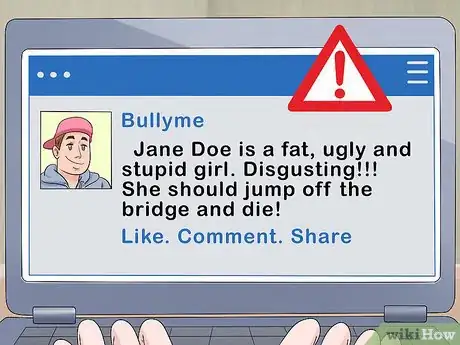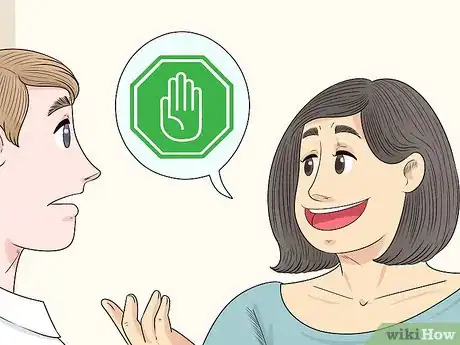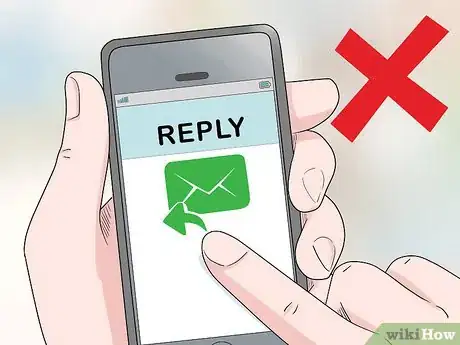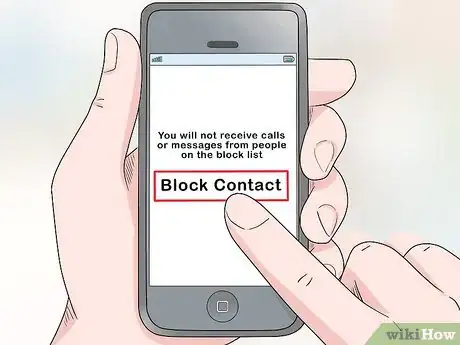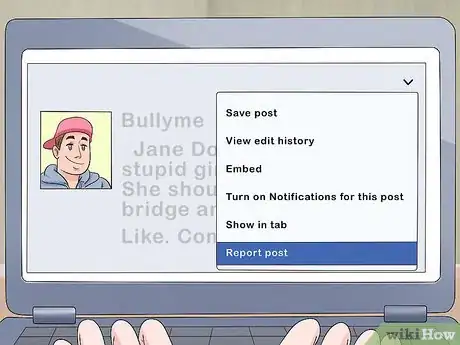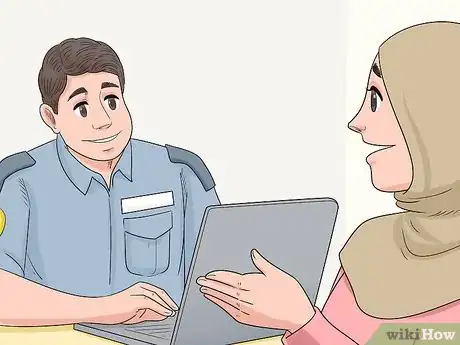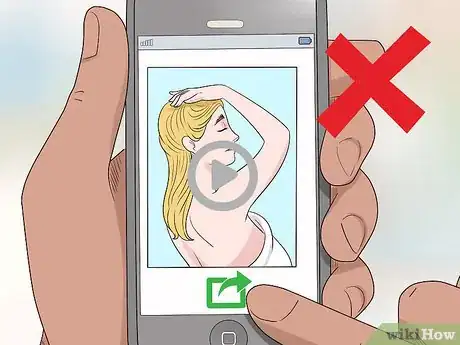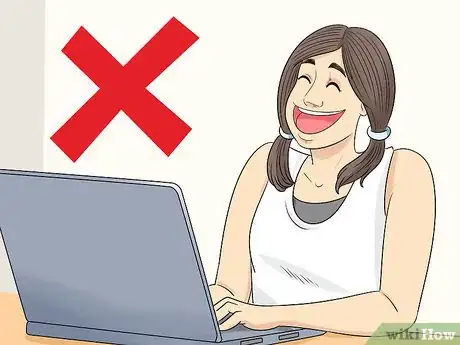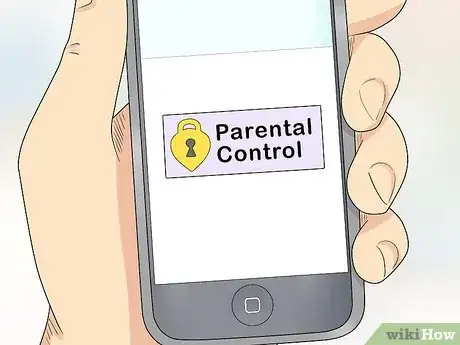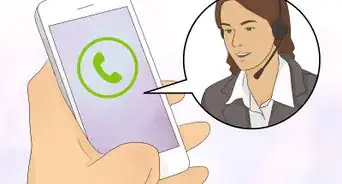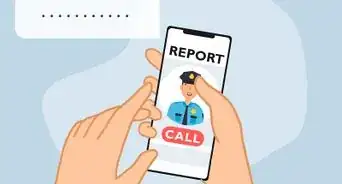This article was co-authored by Scott Nelson, JD. Scott Nelson is a Police Sergeant with the Mountain View Police Department in California. He is also a practicing attorney for Goyette & Associates, Inc. where he represents public employees with a myriad of labor issues throughout the state. He has over 15 years of experience in law enforcement and specializes in digital forensics. Scott has received extensive training through the National Computer Forensics Institute and holds forensic certifications from Cellbrite, Blackbag, Axiom Forensics, and others. He earned a Master of Business Administration from the California State University Stanislaus and a Juris Doctorate from the Laurence Drivon School of Law.
There are 9 references cited in this article, which can be found at the bottom of the page.
wikiHow marks an article as reader-approved once it receives enough positive feedback. In this case, 86% of readers who voted found the article helpful, earning it our reader-approved status.
This article has been viewed 543,581 times.
Cyberbullying occurs when electronic communications such as text messages, emails, instant messages, and social media updates are used to threaten or humiliate someone. People of any age can be cyberbullied, but it happens most often to adolescents and teenagers. Its consequences can be just as serious as the effects of bullying that occurs in person. Cyberbullying is never the victim’s fault. If you’re being bullied, you can deal with it by blocking the bully online and reporting the incidents to an authority figure.
Steps
Help with Cyber Bullying
Identifying Signs of Cyber Bullying
-
1Look for signs of harassment. Whether you’re concerned that you may be getting bullied yourself, or you’re a parent concerned that your child is being bullied, watching out for a few indicative signs is a good way to detect cyberbullying. Cyberbullying often takes the form of one person harassing another through emails, instant messages, text messages or other modes of electronic communication. Harassment is taking place if the bully is directly contacting someone with one or more of the following types of messaging:[1]
- Hateful or threatening messages. This includes name-calling, attempts to control someone’s behavior by threatening to expose embarrassing information, or threats of violence.
- Embarrassing or threatening images or videos.
- Multiple unwanted emails, instant messages, or texts, regardless of the content.
- Lies about the person to make them look bad.
-
2Look for signs of public online humiliation. Another common form of cyberbullying occurs when the bully harasses a target by way of public embarrassment, rather than directly contacting the victim. Cyberbullies may use public tactics, like spreading rumors and gossip using social media, text messages and other tools.[2] Other means of public humiliation via online platforms include:
- Posting humiliating messages on a social media site, a blog, or another public space.
- Sharing pictures or videos that are embarrassing or explicit in nature on social media websites and through text messaging.
- Creating a website filled with defamatory images, insults, and rumors about the target.
Advertisement -
3Look for signs of online impersonation. A less obvious, but equally harmful form of cyberbullying takes place when the bully attacks someone by impersonating them as a way to bring about humiliation or punishment. In some cases the bully may create a screen name nearly identical to the screen name used by someone else, then use that name to create embarrassing or threatening situations for them.[3]
- In this case it is more difficult to identify the perpetrator. Report the impersonation to the website or your service provider.
Taking Action to Stop the Bullying
-
1Ask the bully to stop their behavior. Some bullies start out as a friend, an ex, or someone else you know well. If it’s possible to have a reasonable discussion with the person, ask them to stop.[4] Have the conversation in person, not through email or text. Be clear and direct, and say something like, “I saw those things you said about me on Facebook. That’s inappropriate and it hurt my feelings; I’d like you to stop saying those things about me.”
- If you don’t know who the bully is, or if you’re being bullied by a group of people, attempting to talk it out probably won’t work.
-
2Don’t respond to the bully’s messages. If talking it out won’t work, don’t directly respond to the text messages, instant messages, emails or other communications you may have received from the bully. Bullies want to elicit a reaction from their targets, so firing back a text will only make things worse. Your best course of action is simply to disengage.[5]
- Also, don’t threaten the bully to get back at them. Sending a threatening message out of exasperation will only provoke the bully to keep up the bad behavior, and it may get you in trouble, too.
-
3Save the evidence of cyberbullying. Screenshot or save every email, text, instant message, social-media post, and any other evidence of cyberbullying that you come across. Record the time and date that each message was sent. If you can’t screenshot the offensive messages, you can copy/paste them and save the text on your hard drive.
- Having as much information as possible about the bully’s behavior will help you determine how to stop their behavior.
- You can also show this evidence to an authority figure to prove that you’re being bullied.
-
4Block the bully on all online platforms. Immediately put an end to the bully’s ability to harass you online by blocking that person from direct communication with you. Take advantage of social media sites’ privacy settings to make sure the bully can’t engage with you online anymore. Take the following steps to protect yourself:
- Delete the person from your email contacts and block instant messaging communication.
- Delete the person from your social networks and use the online privacy settings to ensure that the person can’t get in contact with you again.
- Block the person from texting your phone.
Getting Outside Help
-
1Tell a trustworthy adult that you’re being cyberbullied. If you’re a child or teenager, ask an adult for help. Your parents, teachers, principal and school counselor are all in a position to put a stop to the situation before it goes any further. Don’t assume the problem will go away on its own; speak up immediately to put a stop to it.[6]
- You might be tempted to let the bullying run its course instead of bringing attention to the problem, but if you do that the bully will get the message that there’s no penalty for harassing someone.
-
2Talk to your school administrators if you’re being cyberbullied. Tell a person in authority what’s going on, and explain to them the ways in which you’re being cyberbullied. If you’re not comfortable talking to a principal, talk to your favorite teacher or the school counselor. Every school has a policy for dealing with bullying, and more and more schools have a specific plan for putting a stop to cyberbullying.[7] [8]
- No matter what your school’s individual policy might be, it’s part of the administrators’ job to resolve the situation.
- If you’re a child or teenager, know that taking this issue to the school is the right thing to do. Other kids at the school may be experiencing cyberbullying, too. The school needs to be made aware of the problem to take steps to end it.
- If you’re a parent, set up a meeting with the school principal to address the problem head-on.
-
3Report the bully to your service providers and social media sites. Cyberbullying usually violates the terms of service laid out by social media sites, cell phone providers, and other service providers. Read up on your providers’ policies and take steps to report threatening behavior. The provider may decide to penalize the bully or delete their account as a result of your report.[9]
- You may have to send your records of the cyber bully’s messages to the provider as proof you are being bullied.
-
4Contact law enforcement for cases of severe bullying. In some cases cyberbullying may be classified as a crime, which places it beyond the jurisdiction of schools and service providers.[10] [11] If the cyberbullying involves one of the following elements, call your local police department, or report to the officer stationed at your school.
- Threats of violence or death.
- Sexually explicit photos or descriptions of sex acts. If the images are of a minor, this may be considered child pornography.
- Secretly-recorded photos or videos that were taken without the subject’s knowledge.
- Hateful texts or online messages that single out and harass the victim on the basis of certain features, such as race, gender, religion, or sexual identity.
Preventing Cyber Bullying
-
1Avoid sharing sensitive personal information online where everyone can see it. Cyberbullies often use pictures, status updates, and personal information they find online to harass their targets. It’s okay to share information about yourself online, but never publicly reveal something you don’t want the whole world to know.[12] Even if you want to have a serious, personal conversation with a friend, do so in person, not over tweets, Facebook posts, or Instagram comments.
- For example, don’t post an explicit photo of yourself on a public Tumblr blog. Keep those pictures to private blogs.
- Anything typed into a public Facebook comment, Tumblr post, or Instagram comment could land in the wrong hands. Try not to discuss deeply personal information online.
-
2Don’t participate in cyber-bullying behavior. If you’re feeling marginalized or picked on, it’s tempting to channel those negative feelings into bullying activities, to give yourself a sense of power. But, even if you’re the one doing it, cyberbullying is still wrong. Your behavior can influence other people’s actions, so make it clear that you don’t stand for cyberbullying by setting a good example for others.[13]
- If your friends start teasing someone online or via text, don’t participate. Ask them to stop, and let them know that cyberbullying has the same dangerous consequences as in-person bullying does.
-
3Install parental control software or apps on your PC and smartphone. This software or app will block attempts at bullying and prevent your child from seeing inappropriate online content.[14] If you don’t already have this, then ask your parents about installing it.
- If you’re a parent, then go ahead and install protective software—or turn on privacy apps—as a protective measure.
Expert Q&A
-
QuestionWho should I report cyberbullying to?
 Scott Nelson, JDScott Nelson is a Police Sergeant with the Mountain View Police Department in California. He is also a practicing attorney for Goyette & Associates, Inc. where he represents public employees with a myriad of labor issues throughout the state. He has over 15 years of experience in law enforcement and specializes in digital forensics. Scott has received extensive training through the National Computer Forensics Institute and holds forensic certifications from Cellbrite, Blackbag, Axiom Forensics, and others. He earned a Master of Business Administration from the California State University Stanislaus and a Juris Doctorate from the Laurence Drivon School of Law.
Scott Nelson, JDScott Nelson is a Police Sergeant with the Mountain View Police Department in California. He is also a practicing attorney for Goyette & Associates, Inc. where he represents public employees with a myriad of labor issues throughout the state. He has over 15 years of experience in law enforcement and specializes in digital forensics. Scott has received extensive training through the National Computer Forensics Institute and holds forensic certifications from Cellbrite, Blackbag, Axiom Forensics, and others. He earned a Master of Business Administration from the California State University Stanislaus and a Juris Doctorate from the Laurence Drivon School of Law.
Police Sergeant, Mountain View Police Department The best thing would be to report it to the school first if any other students are involved, but then also to your local law enforcement as well to see if it rises to the level of an actual crime instead of something like just intimidation or bullying.
The best thing would be to report it to the school first if any other students are involved, but then also to your local law enforcement as well to see if it rises to the level of an actual crime instead of something like just intimidation or bullying. -
QuestionWhat if the bully doesn't come right out and threaten your child but tells the child to kill herself instead?
 Klare Heston, LCSWKlare Heston is a Licensed Independent Clinical Social Worker based in Cleveland, Ohio. With experience in academic counseling and clinical supervision, Klare received her Master of Social Work from the Virginia Commonwealth University in 1983. She also holds a 2-Year Post-Graduate Certificate from the Gestalt Institute of Cleveland, as well as certification in Family Therapy, Supervision, Mediation, and Trauma Recovery and Treatment (EMDR).
Klare Heston, LCSWKlare Heston is a Licensed Independent Clinical Social Worker based in Cleveland, Ohio. With experience in academic counseling and clinical supervision, Klare received her Master of Social Work from the Virginia Commonwealth University in 1983. She also holds a 2-Year Post-Graduate Certificate from the Gestalt Institute of Cleveland, as well as certification in Family Therapy, Supervision, Mediation, and Trauma Recovery and Treatment (EMDR).
Licensed Social Worker You should remove your child from all sources of social media if bullying takes on this proportion. Also, consider contacting the police if a threat to your child's life is made. There are also additional resources online for families about cyberbullying. It is always better to react rather than under-react with respect to serious cyber-bullying.
You should remove your child from all sources of social media if bullying takes on this proportion. Also, consider contacting the police if a threat to your child's life is made. There are also additional resources online for families about cyberbullying. It is always better to react rather than under-react with respect to serious cyber-bullying.
Warnings
- Don’t take photos or record videos that include someone's face or other personally identifying information without their knowledge or permission. It’s against the law to secretly record someone else’s behavior when they believe no one is watching.⧼thumbs_response⧽
- Never distribute private photos or videos of anyone that could be considered explicit, humiliating or could otherwise be used against the person.⧼thumbs_response⧽
References
- ↑ http://www.stopcyberbullying.org/what_is_cyberbullying_exactly.html
- ↑ https://www.helpguide.org/articles/abuse/bullying-and-cyberbullying.htm
- ↑ http://www.stopcyberbullying.org/how_it_works/direct_attacks.html
- ↑ http://www.connectsafely.org/tips-to-help-stop-cyberbullying/
- ↑ https://www.helpguide.org/articles/abuse/bullying-and-cyberbullying.htm
- ↑ https://www.huffingtonpost.com/signe-whitson/10-strategies-for-stopping-cyberbullying_b_4811546.html
- ↑ https://www.stopbullying.gov/cyberbullying/how-to-report/index.html
- ↑ Scott Nelson, JD. Cyber Safety Specialist. Expert Interview. 2 April 2020.
- ↑ https://www.stopbullying.gov/cyberbullying/how-to-report/index.html
- ↑ http://www.stopbullying.gov/cyberbullying/how-to-report/index.html
- ↑ Scott Nelson, JD. Cyber Safety Specialist. Expert Interview. 2 April 2020.
- ↑ https://usa.kaspersky.com/resource-center/preemptive-safety/top-10-ways-to-stop-cyberbullying
- ↑ https://www.helpguide.org/articles/abuse/bullying-and-cyberbullying.htm
- ↑ https://www.helpguide.org/articles/abuse/bullying-and-cyberbullying.htm
About This Article
To stop cyberbullying, take immediate action by blocking the bully on all online platforms so they can't communicate with you directly anymore. Try to avoid responding to cyberbullying, since the bully's goal is to get a reaction out of you and responding to them is exactly what they want you to do. It can also help to screenshot evidence that you're being harassed so you can easily report the bully to service providers, social media sites, school administrators, your parents, and even the police if you feel truly threatened. For more tips on recognizing cyber bullying and how to stop the harassment, read on!
